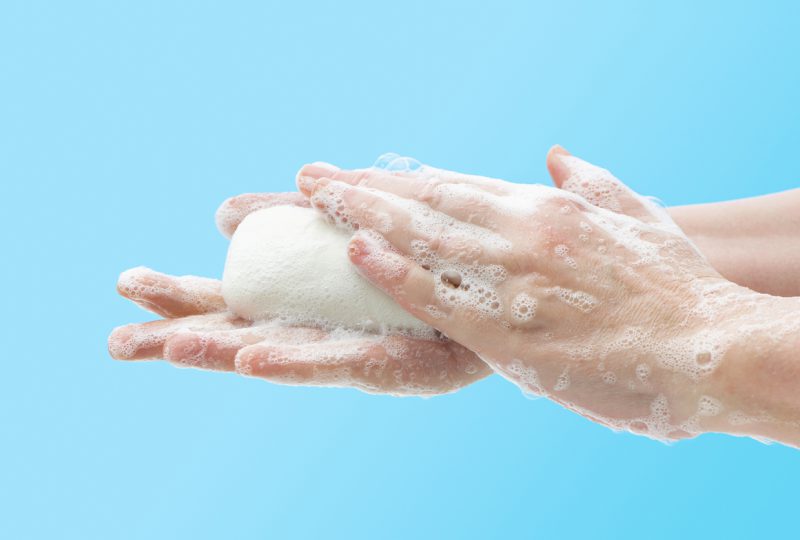Frequent hand-washing can cause dry, cracked skin. A dermatologist offers tips for care.
The cure for "COVID hands" lies in frequent moisturizing. Using shortening from the kitchen is optional.
April 7, 2020
Health care professionals are at risk of dry, cracked, scaly (or worse) hands due to frequent hand washing and sanitizing in the best of times. With even more frequent washing and sanitizing at home as well as work during the COVID-19 pandemic, hands are even more prone to trouble with dryness, redness, itching, oozing, and even pain. The official name for this is hand dermatitis.
Hand dermatitis is fundamentally caused by the breakdown of the natural oil barrier made by the skin to protect itself. Soap, alcohol and other chemicals in sanitizers damage and remove that oil barrier, thus leaving the skin porous and “leaky” to many things that come into contact with it. As chemicals, dust and other allergens penetrate the skin, they elicit the inflammatory response that causes redness, itching and pain.
In general, products that are scooped out of a jar seal the skin better than those that pump from a bottle. The shortening you may have in your kitchen is actually a very good treatment!
Bacteria, particularly staphylococcal species, are better able to bind to and enter the skin thus causing infection and further inflammation. All of these things further break down the barrier function of the skin and a vicious cycle ensues – the more you wash or foam, the worse it gets.
The single most important step preventing problems in the first place or to repair damaged skin is to “plug the leaks”; you must seal the skin to keep damaging chemicals, soap and bacteria out and replenish your natural oil barrier.
Dermatologists use the “soak and smear” therapy for most forms of dry and/or inflamed skin:
- Soak the hands in lukewarm water; for best results soak 5 –10 minutes to re-hydrate the skin. All skin treatments work better when applied to damp skin.
- Pat dry.
- Smear a liberal amount of moisturizer and gently rub it into the skin. Ointments such as petrolatum or other greasy products work better than creams or lotions. Make sure to use a product that is fragrance free and classified as hypoallergenic to avoid further irritation. In general, products that are scooped out of a jar seal the skin better than those that pump from a bottle. The shortening you may have in your kitchen is actually a very good treatment!
- For the ultimate treatment, wear cotton gloves or socks on the hands over the ointment for an hour at least or even overnight. Although plastic gloves are OK to use too, hands often sweat in them which also can be irritating.
- Repeat this treatment several (up to 5-6) times a day as you are able. Doing this treatment just before bed and wearing the gloves or socks while you sleep will be beneficial.
Also, carrying a hypoallergenic moisturizer while at work or out of the house and applying it frequently will help. This is best applied to damp skin after washing to seal in the hydration.
If your hands become extremely red and irritated, using over-the-counter steroid hydrocortisone twice a day usually helps. Again, use the ointment form for best results and also apply to damp skin. Moisturizing frequently or doing the soak and smear treatment above in between using the medicated ointment is still imperative.
Avoid using products that contain neomycin or bacitracin as these are potent sensitizers that can actually worsen the redness and irritation.
Finally, if these treatments do not work, it is time to discuss with your dermatologist. Stronger topical medications, light treatment, topical or oral antibiotics, and even shots may be needed to help you. Although face to face visits are not advisable at this time except under emergent conditions, problems like hand dermatitis are usually easily addressed via telehealth online technology. Vanderbilt dermatology is open for business both online and in person if you need us.
Jami Lyn Miller, MD, is an assistant professor of Dermatology.
Photo by iStock










